IF YOU BOUGHT A SET IN 1973, IT MIGHT BE TIME TO FRESHEN 'EM UP
Nearly 25 years ago, I ran into a short, stout gentleman named Gil Vaillancourt. At first glance, he looked like an ex-prizefighter about 15 years away from the ring. Naturally, you are stunned when you find out he is not only a brilliant engineer, but a concert level violinist as well. It just doesn't seem to fit, but after a while, you forget about that visual disparity and listen to Gil talk about shocks.
Remember 1973?
Right around that time, we all rode bikes with four inches of travel in the rear. The stock shocks - in general - were wretched, so most of us opted for Konis, Curnutts or Cerianis. Then the long travel craze started, and confusion reigned.
We bolted huge coolers on those Konis trying to keep them from fading. Jim West, the Maico rider of that era, even went so far as to hand-craft an aluminum housing around his shocks and pack them with ice before each moto.
Gil didn't go through all that maddening rat race; instead, he simply made a great shock that worked. During the short travel/long travel transition, riders in the know bolted on a set of Works Performance shocks designed and built by Gil, and rode happy.
To this day, if you race a vintage dirt bike, you either slip on a pair of Works shocks, or work twice as hard as you should with something else. With the popularity of the new Evolution Series bikes (twin-shock, air-cooled machines), Works shocks have become an absolute must! Consider that bikes of this period ran around 12 inches of rear end travel.
Even though Works shocks are made from top quality materials, like anything else, they need freshening up every now and then. You can send them back to Works and let them do it, or do it yourself.
Follow along, and we'll show you how:
 |
4:
Aim the shock at a container and release the pressure on the Schraeder valve. As the gas escapes, some oil will splatter out. |
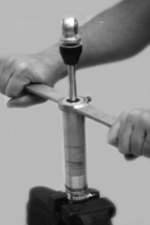 |
5:
Use an adjustable pin tool, or a special spanner from Works, to unscrew the cap. Threads are right-hand pitch and may take some force, or light tapping, to break loose. |
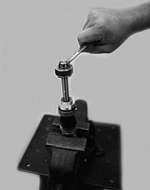 |
7:
Put the shock shaft eye in the vise, and then remove the nut that secures the damping piston on the shaft. |
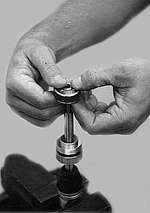 |
8:
Carefully remove the piston assembly in one piece, because all the parts inside must be kept in order. |
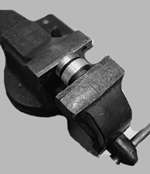 |
14:
The outer seal can be now pressed into place in a vice. Then lightly grease the O-rings and reinstall them. |
 |
15:
When installing the piston assembly and the shaft washer and nut, position the rebound flappers so that you can see the balls through the holes. |
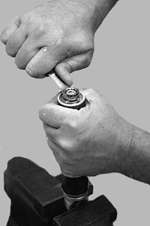 |
16:
Hold the flappers in position and tighten the shaft nut to 16 lbs. Double check to see that the balls are visible through the holes. |
| Works will make shocks for special applications; all you have to do is send them all the vital information. This hybrid RM-framed Suzuki with a DR-370 motor built by the author got the Works treatment. Too bad the motor was such a dog. |
21045 Osborne St.
Canoga Park, CA 91304




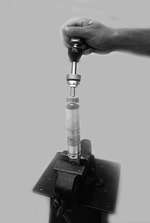
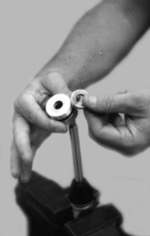
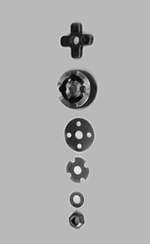


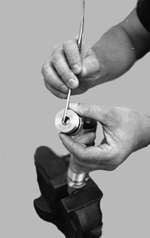
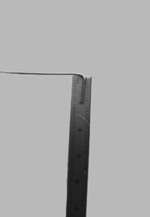
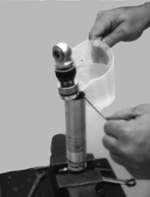
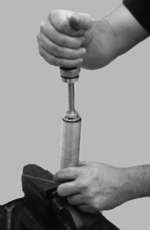
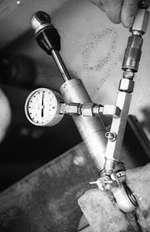
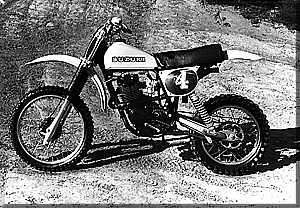

 Your Privacy Choices
Your Privacy Choices